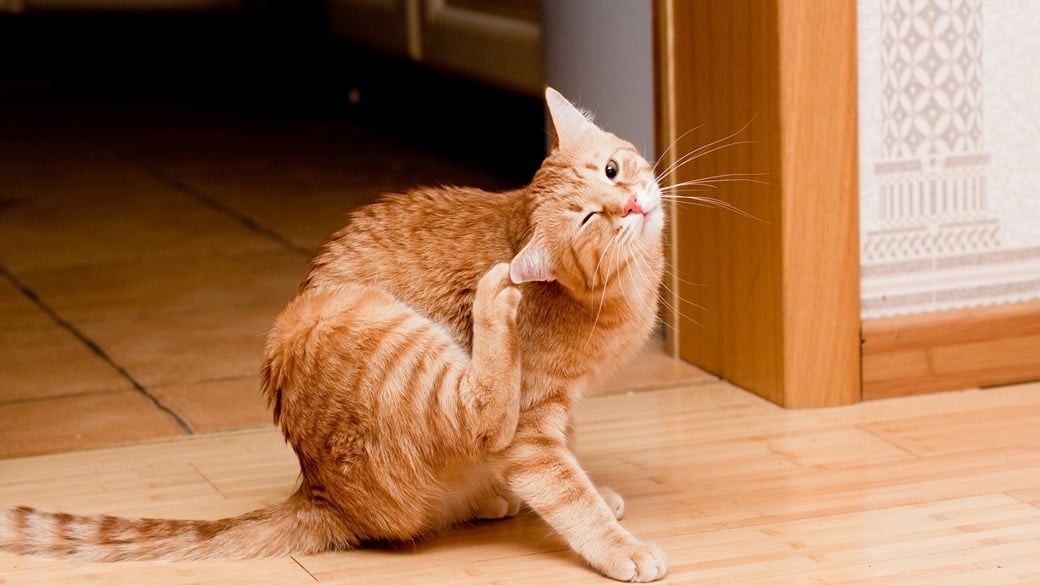
Lice And Your Cat
Lice live on the skin of your cat, and feed on the skin itself. Lice can be uncomfortable for your cat, and can make them itchy and sore in large numbers.
Lice reproduce by laying eggs, called ‘nits’ – a single louse can lay up to sixty eggs in her lifetime! As the lifecycle of a louse is generally around 3 weeks, numbers can quickly build on affected cats.
More about lice
Lice are a type of wingless insect, which live on the skin of animals for their whole life and can only survive for a few days in the environment. Unlike many other parasites, lice are very host-specific, so will only infest specific species. Lice can either be chewing lice, which chew on the skin of their host, or biting lice, which suck blood, however the only louse which affects cats in the UK is a chewing louse.
Louse infestations are more common in elderly animals, especially cats with long hair, possibly due to their reduced ability to groom themselves. Thankfully, infestations are not common in cats in the UK, although they can occur.
The only cat louse in the UK is called Felicola subrostratus. An uncommon parasite of cats, Felicola is a chewing louse and feeds off skin calls.
An infestation with lice, also called ‘feline pediculosis’, may show signs including:
- Visible ‘nits’ (louse eggs) on the hair or visible adult lice
- Patchy hair loss
- Moth-eaten appearance
- Itching and rubbing
- Restlessness
If your cat is experiencing any of these signs then make an appointment with your local Companion Care practice.
Your vet may recommend skin tests which can look for parasites using a microscope if they suspect lice.
Thankfully, although you can’t stop your cat being exposed to lice, you can prevent an infestation developing by:
- Regular anti-parasite treatments. Although a lice infestation is rare, many of the parasitic treatments for cats manage a range of parasites including lice. The best parasite protocol for your cat will depend on you and your cat and your vet can help you decide which regime works best for you. However you choose to manage parasites in your cat, make sure to speak to a vet about the best anti-parasitics on offer, as many over the counter treatments have poor efficacy.
- Considering all pets. Although lice do not transmit between species, if you have more than one cat, make sure all your cats are treated regularly for parasites.
- Monitoring. If you see any changes in your cat’s hair coat, skin or behaviour, always get them checked over by a vet who will be able to help control any louse infestation.
- Grooming. Regular grooming, especially of long-haired cats, can help identify any changes in your cat’s skin early, which will help with effective and rapid treatment.
Thankfully, healthy adult cats are at a low risk of picking up a lice infestation.
If you think your cat might have lice, the best thing to do is to go to your vet. They can do a full physical examination, and check your cat over from nose to tail! If there is a risk your cat may have lice, your vet will prescribe a treatment suitable for your pet, which should eliminate the lice. They can also help you plan a parasite prevention plan going forward too, to make sure your cat stays protected, and talk to you about how to clean items like bedding to help prevent reinfection.
If there is any doubt, your vet may recommend skin tests. These will look for the lice, which can be more easily identified under a microscope.
As lice are species specific, it is very unlikely for cat lice to transmit to humans.
